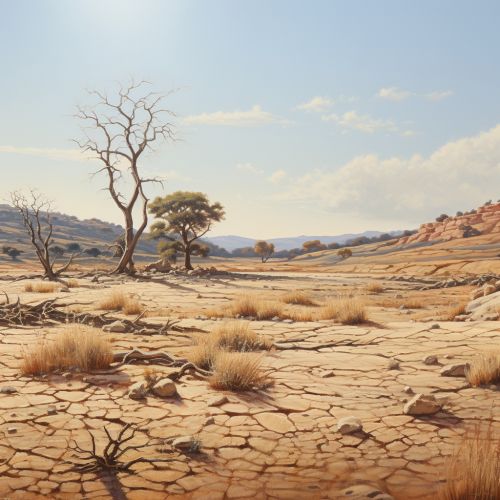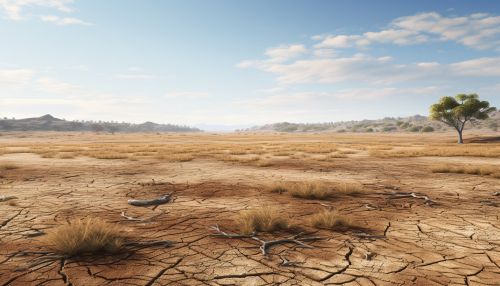Ecohydrology of Arid Landscapes
Introduction
Ecohydrology is an interdisciplinary scientific field that studies the interactions between water and ecosystems. In arid landscapes, these interactions are particularly crucial, as water scarcity can significantly impact the structure and function of ecosystems. This article delves into the ecohydrology of arid landscapes, exploring the unique challenges and adaptations that characterize these environments.


Hydrological Processes in Arid Landscapes
Arid landscapes, also known as deserts, are characterized by low precipitation, high evaporation rates, and a general scarcity of surface water. This section explores the hydrological processes that occur in these environments, including precipitation, evaporation, and groundwater movement.
Precipitation
Precipitation in arid landscapes is typically low and highly variable, both spatially and temporally. Rainfall events are often intense but brief, leading to rapid runoff and minimal infiltration into the soil. This phenomenon, known as Horton overland flow, can lead to flash floods in arid environments.
Evaporation
Evaporation rates in arid landscapes are typically high due to the intense solar radiation and low humidity. This process can further deplete the already scarce water resources, exacerbating water stress in these environments. Evapotranspiration, the combined process of evaporation from the soil surface and transpiration from plants, is a major component of the water cycle in arid landscapes.
Groundwater Movement
In arid landscapes, groundwater often plays a crucial role in sustaining ecosystems, particularly in the absence of reliable surface water sources. The movement of groundwater is influenced by factors such as soil properties, topography, and climate. In some arid regions, aquifers can store substantial amounts of water, providing a vital lifeline for ecosystems during periods of drought.
Ecosystem Responses to Water Scarcity
Arid landscapes are home to a diverse range of organisms that have evolved a variety of strategies to cope with water scarcity. This section explores how these ecosystems respond to the challenges posed by arid conditions.
Plant Adaptations
Plants in arid landscapes have evolved a range of adaptations to survive in water-limited environments. These include deep root systems to access groundwater, succulent tissues to store water, and small, thick leaves to reduce water loss through transpiration. Many desert plants, such as cacti, have also developed the ability to carry out CAM photosynthesis, a specialized form of photosynthesis that minimizes water loss.
Animal Adaptations
Animals in arid landscapes also exhibit a range of adaptations to cope with water scarcity. These include physiological adaptations, such as the ability to concentrate urine and reduce water loss through respiration, and behavioral adaptations, such as being nocturnal to avoid the heat of the day. Some desert animals, such as the Kangaroo rat, can survive without drinking any water, obtaining all the moisture they need from their food.
Human Impacts on Arid Landscape Ecohydrology
Human activities can significantly impact the ecohydrology of arid landscapes. This section explores some of the key ways in which humans influence these environments.
Water Extraction
Human extraction of water, particularly groundwater, can significantly impact arid ecosystems. Over-extraction can lead to the depletion of aquifers, reducing the availability of water for ecosystems and potentially leading to land subsidence and other environmental problems.
Land Use Change
Changes in land use, such as the conversion of natural ecosystems to agricultural land, can also impact the ecohydrology of arid landscapes. These changes can alter the water cycle, increase evaporation rates, and reduce the availability of water for natural ecosystems.
Climate Change
Climate change is expected to have significant impacts on the ecohydrology of arid landscapes. Increased temperatures can exacerbate evaporation rates, while changes in precipitation patterns can alter the timing and intensity of rainfall events. These changes can further stress arid ecosystems, potentially leading to shifts in species distributions and community compositions.
